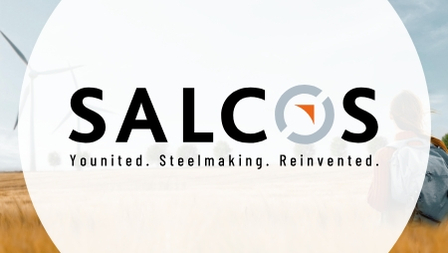Online product information at the Salzgitter Flachstahl sorting stands
13.09.2017 | Salzgitter Flachstahl GmbH
In OEM and automotive supply industry pressing plants, quality notes and information on the particular component and vehicle are often shown next to the press. Monitors are increasingly replacing the movable walls and paper printouts that have commonly been used until now. The question that arises is, “Can this also be done for continuous processes at Salzgitter Flachstahl?”
For example, a comparison between a press’s discontinuous production process and a hot dip galvanizing line’s continuous production quickly uncovers a crucial difference: In a press, a mold is installed and then the same component is produced for a number of hours. In a hot-dip galvanizing facility, a production batch takes only a few minutes. The system then runs for the next order without any interruption. In addition, a larger number of different products are manufactured on the hot-dip galvanizing system, and the requirements for the digital sign are correspondingly greater.
Together with affiliated companies, GESIS (Gesellschaft für Informationssysteme) and Salzgitter Mannesmann Forschung (SZMF), Salzgitter Flachstahl has developed a system for the hot-dip galvanizing line in order to provide such information continuously. The system’s process computer “reports” the next pieces to be produced to the SAP order data system. The SAP system uses an algorithm to determine the OEM and vehicle. It supplies the corresponding pictures from an image database. A picture of the end product and a schematic component image are sent to the process computer for each piece. Another algorithm supplies the customer’s quality notes, which are then also displayed.
In the sorting stand for hot-dip galvanizing line 2, a monitor has been installed that offers a real-time display of the information regarding the particular coil that is currently in production. The focus is consequently always on the customer. Each employee can tell the material’s intended use and know exactly what has to be kept in mind by checking the display directly at the system.
Because the interfaces for the individual systems have been designed to be compatible, other information can also be transferred without undue effort and expense. The system is furthermore modular and it is currently being adapted for additional production plants.








